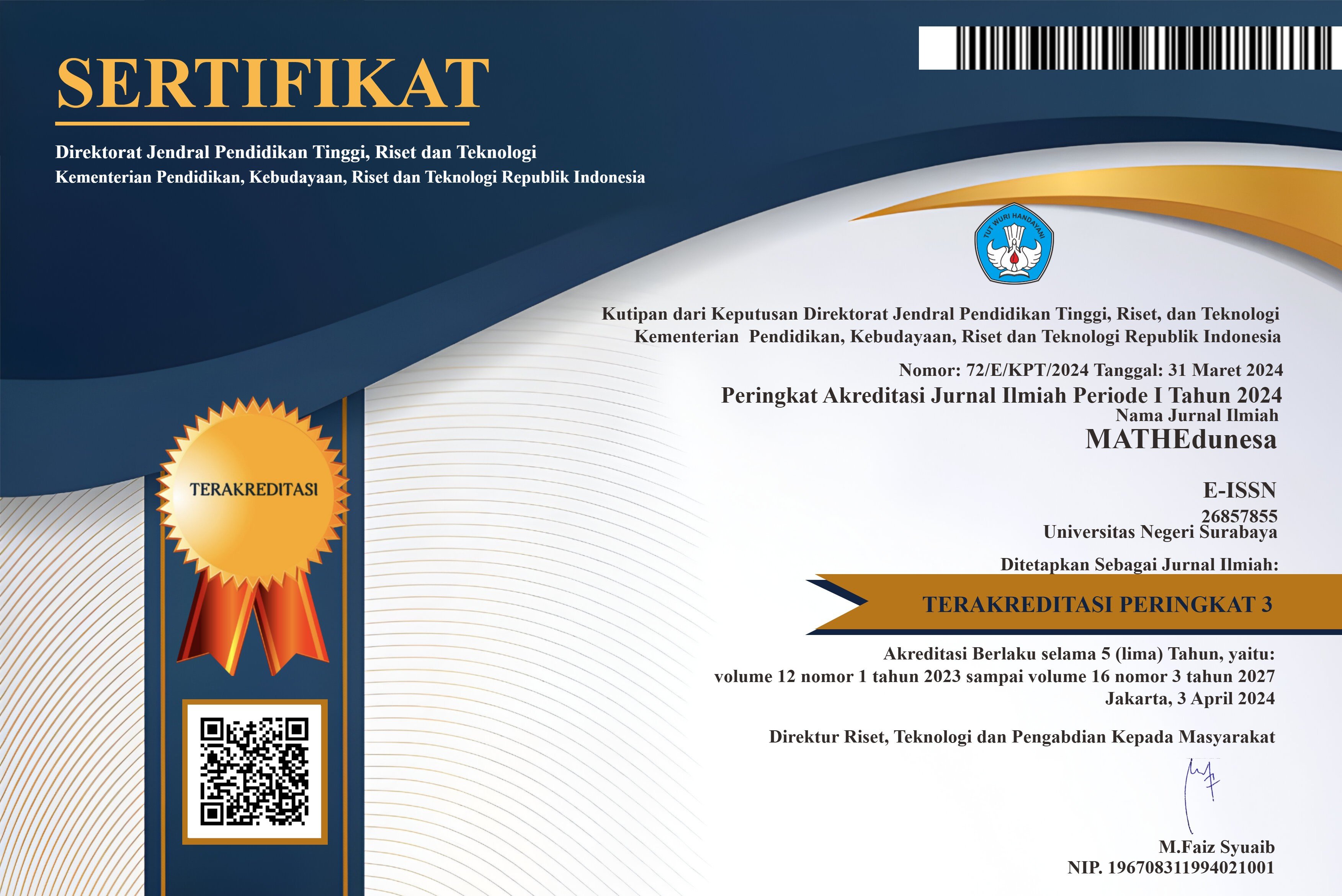PROFIL KEMAMPUAN BERPIKIR KRITIS SISWA DALAM MENYELESAIKAN SOAL HIGHER ORDER THINKING SKILLS (HOTS) DITINJAU DARI JENIS KELAMIN
DOI:
https://doi.org/10.26740/mathedunesa.v9n3.p570-578Abstract
Critical thinking skills are the ability to think individuals in managing information, finding solution, and evaluating the problems obtained based on six criteria, namely (1) Focus, (2) Reason, (3) Inference, (4) Situation, (5) Clarity and (6) Overview. HOTS questions are a type of question that can help hone students' critical thinking skills. This research is a descriptive study with a qualitative approach that aims to describe students' critical thinking skills in solving HOTS questions in terms of gender. The instrument used in this study was a math ability test and HOTS questions. The subjects used in this study consisted of two junior high school students, one male student and one female student with high math ability. The results of the research on male students' critical thinking skills in solving HOTS questions show that male students are able to understand and find the essence of the problem, can provide reasons that support the way male students use, and can draw conclusions using the method that male students have used, so that male students meet the indicators of critical thinking Focus, Reason, and Inference. The ability to think critically of female students shows that female students can understand and find the essence of the problem, can provide reasons that support the way female students use it, can draw conclusions using the method that female students have determined, female students can reveal important factors that support the method used , and can describe the term at every step of the completion, so that female students meet the indicators of critical thinking Focus, Reason, Inference, Situation, and Clarity.
Keywords: Critical Thinking, Higher Order Thinking Skill
Downloads
Downloads
Published
Issue
Section
 Abstract views: 473
,
Abstract views: 473
, PDF Downloads: 555
PDF Downloads: 555




